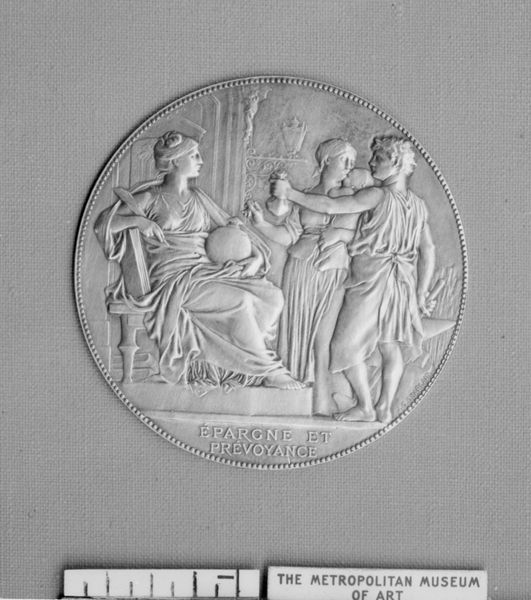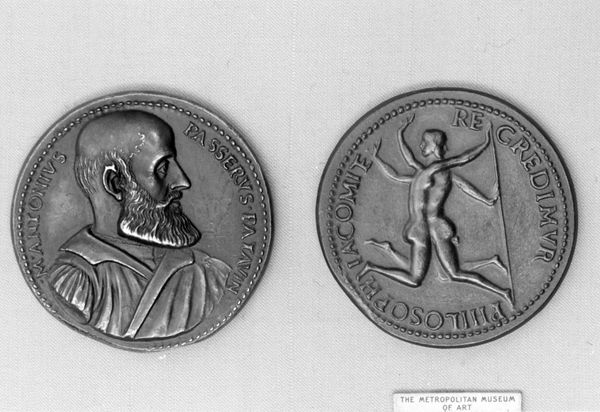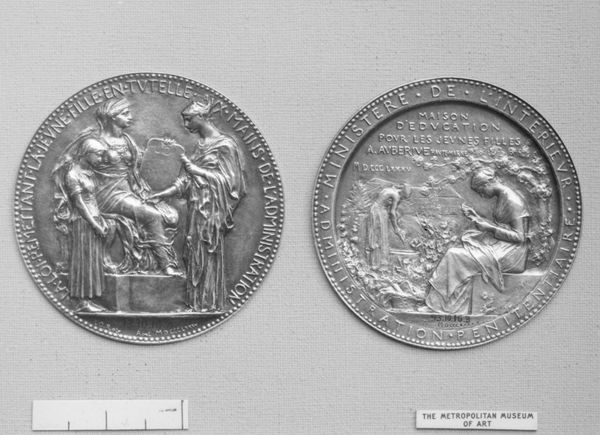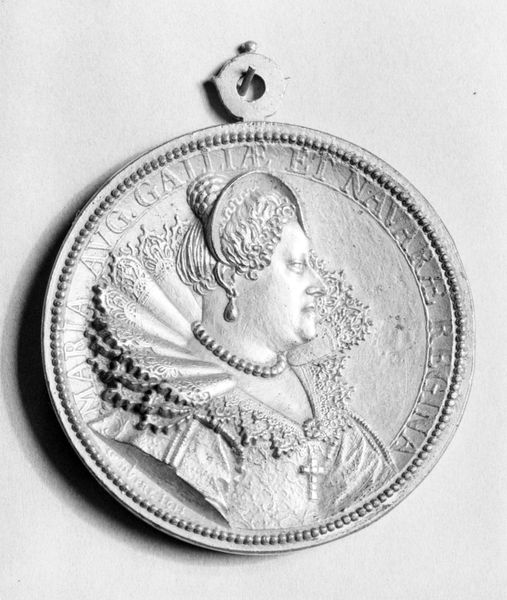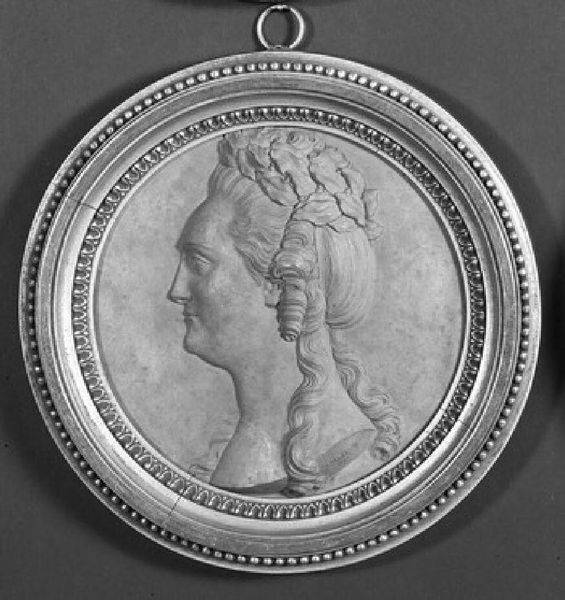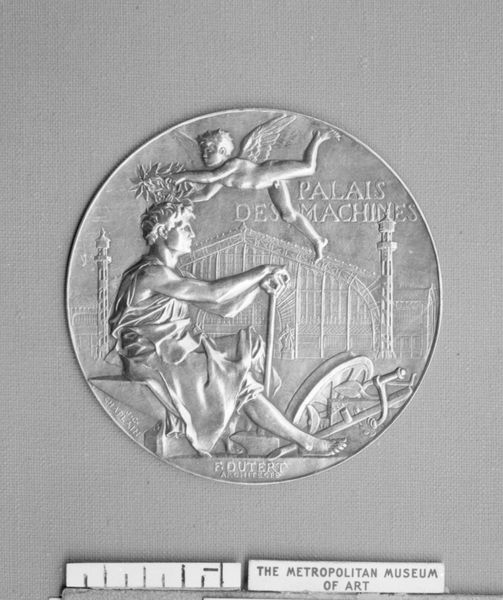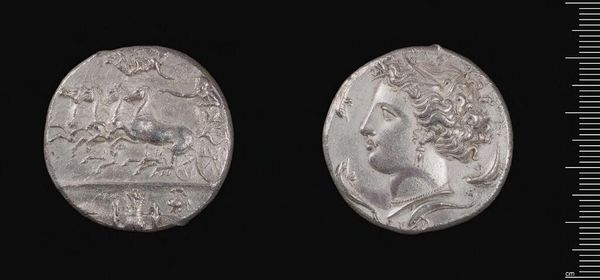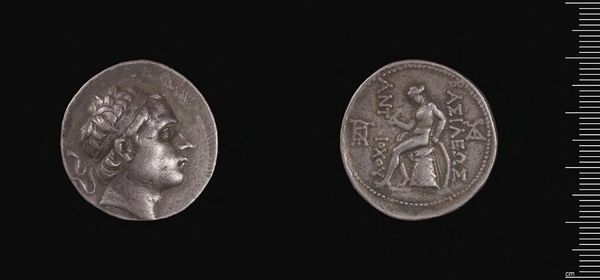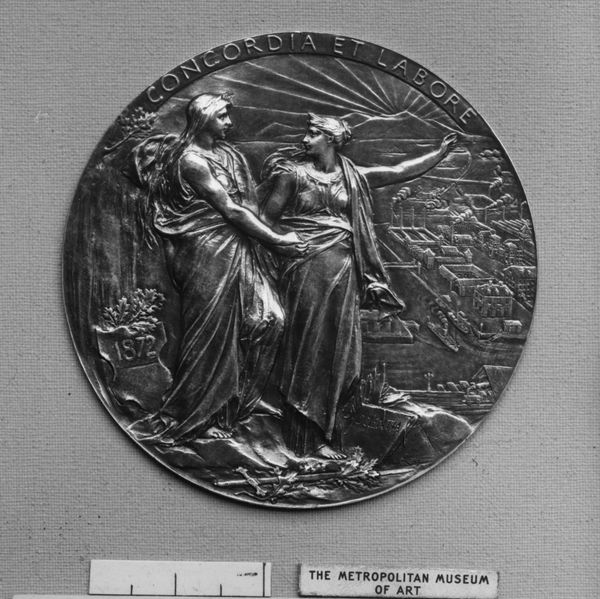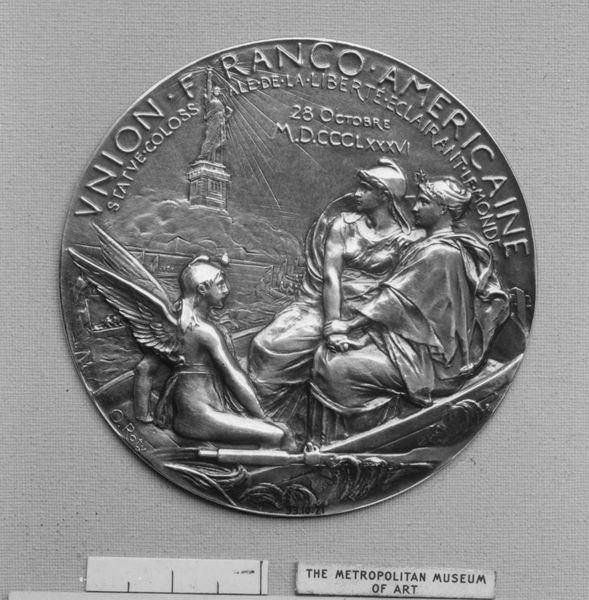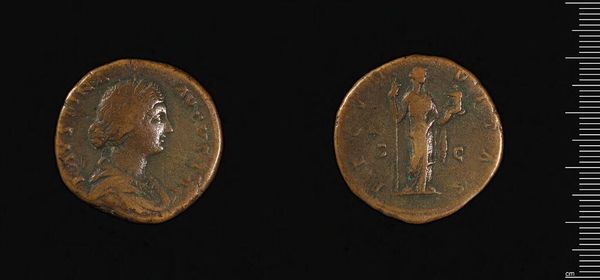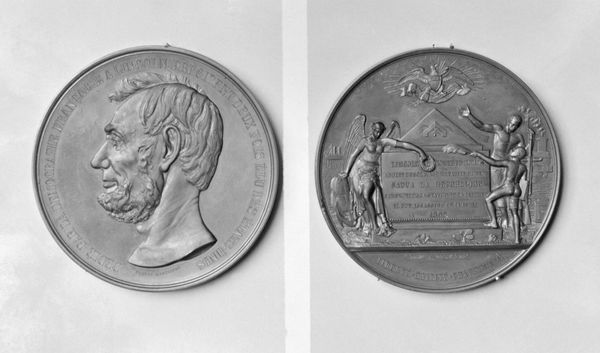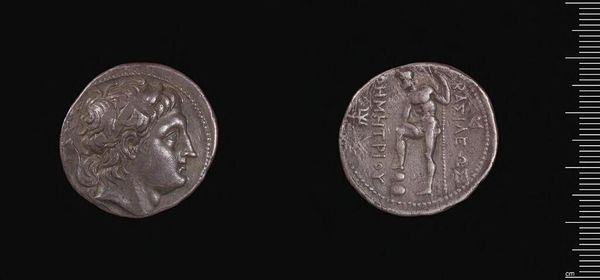
Louis XIII (b. 1601, r. 1610–43), King of France, as youth 1610
0:00
0:00
metal, sculpture
#
portrait
#
medal
#
baroque
#
metal
#
sculpture
#
figuration
#
sculpture
#
history-painting
#
decorative-art
Dimensions: H. 2 1/4 in. (57 mm.); W. 1 5/8 in. (41 mm.)
Copyright: Public Domain
Editor: This is a medal by Guillaume Dupré, created in 1610, titled "Louis XIII (b. 1601, r. 1610–43), King of France, as youth.” It's a metal piece, currently housed at the Metropolitan Museum of Art. It seems to idealize youth and power. How should we interpret it, thinking about its historical context? Curator: This medal serves as potent propaganda. Notice the inscription "ORBEM PER JUSTITIAM REGIT." It signifies that Louis XIII, even as a youth, rules the world through justice. How might such imagery function within the political climate of the time? Editor: So, it's not necessarily about representing Louis XIII accurately as a child, but rather projecting an image of divinely ordained, just rule, right? Curator: Precisely. Medals like these were often distributed to elites, reinforcing the monarchy’s legitimacy. Consider the allegorical figure of Justice alongside the young king. She offers not only blessing, but also affirms the role and duty of the King within the French social order. It links his reign directly to universal principles of righteousness and divinely ordained leadership. The use of allegory encourages certain interpretations while discouraging others. It demands active engagement. How do you think that affected its initial audiences? Editor: It’s fascinating to consider how something like this could shape public perception, constructing a particular narrative about the King’s role and authority so early in his reign. It sounds like the medal is not just a portrait, but a very deliberate act of political communication. Curator: Yes. Dupré was employed at the mint, thus directly engaging with that dissemination of state-sponsored imagery. Looking closer, consider what the choice of materials themselves may say about wealth, permanence, and power. Editor: So much to unpack! I'll never look at commemorative medals the same way again. This provides a rich sense of art functioning as propaganda, with visual and material choices reinforcing royal authority. Curator: Absolutely. These objects offer powerful insights into the construction and maintenance of political power in the 17th century.
Comments
No comments
Be the first to comment and join the conversation on the ultimate creative platform.
